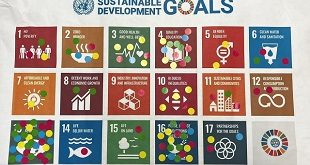
Experts query their cost and compare them to current VHTs
Kampala, Uganda | FLAVIA NASSAKA | Flue, cough, headache, or diarrhea; these simple ailments can be quite uncomfortable. But are they worth going to a health facility to get treated, especially if it is far away, crowded, and the doctor might be away? Possibly not.
Unfortunately, they sometimes are symptoms of dangerous conditions like malaria, dysentery, or cholera which kill, especially children.
That is why the government wants to tackle them quickly, conveniently, and cost effectively.Under the plan, starting this July, the government is to introduce Community Health Extension Workers (CHEWs) to provide basic health services such as sensitization about immunization programmes, sanitation, and contraceptives, and to manage such simple common medical conditions.They will engage the sick and their caretakers.
Dr. Sarah Byakika, the Commissioner for Planning at the Ministry of Health, says the move is part of the strategy to shift healthcare from focusing on treatment to prevention. The idea is to ensure adequate universal health coverage.
The CHEWs will be members of the communities where they live. They will be trained to also link those who need special treatment to health facilities.
Byakika adds that CHEWs will not only treat but will teach communities how to prevent another illness because they know the people in the area well.
The programme to be piloted in 750 parishes in North and Eastern Uganda districts, will involve recruiting 1500 CHEWs; two per parish. They will be given a monthly allowance for their work and Shs3.2 billion has been set aside for the job.
Dr. Charles Olaro, the head of the Clinical Services Division at the Ministry of Health says the plan is to spread the CHEWs programme all over the country in five years.
Same as VHTs?
On the face of it, the CHEWs model is not completely new.It is sometimes called the `Cuban Approach’ to healthcare which has become the world’s best example of achieving high health indicators on very small budgets and a policy emphasis on prevention, primary care, service in the community, and active participation of citizens.
Many countries, including Ethiopia, have adopted this approach and CHEWs have been placed within the system to handle issues of malaria, nutrition, and contraceptives.
Reports show that just five years after their deployment, Ethiopia saw a rise in contraception use among women from just 15% to 30%. Other developing countries like Malawi and India, where millions of social health activists have been accredited, are seeing similar positive changes. Hospital admissions are decreasing as people learn to prevent some infections. This leads to decreasing government expenditure on healthcare.
In Uganda, it is somewhat similar to the Village Health Teams (VHTs) who are currently the lowest hierarchy of healthcare facilities (Health Centre 1s) and have been in operation for more than 15 years. The VHTsare voluntary and are not required to have any qualification to work.
Even the idea behind establishment of VHTs was similar – to provide accurate health information, mobilise communities, and provide linkage to health services. Many have since moved into providing some treatments as an element of case management was introduced where VHTs are allowed to administer treatments for minor ailments. So isn’t the government adding an unnecessary layer where VHTs already exist?
Take Alex Olengo, for example. He has since 2005 been a VHT in Atyang village, five kilometers from Lira town in Northern Uganda, speaks like an expert on the effectiveness of such grassroots-based interventions in medical work, and narrates how VHTs have helped the Ministry of Health achieve its targets of reducing child, infant, and maternal mortality in his area. He says tackling diseases such as malaria and hygiene related infections are the solution and that members of the community now depend on VHTs.
“When we give them medicine they take it because they trust us,” he says.
He says the VHTs busiest time is when there is a disease outbreak because they are sent to collect data on the outbreak which involves a lot of activity and movement. Normally, however, they handle issues of family planning, hygiene, and HIV/AIDS.He says VHTs can do an even better job with training. Until now, Olengo says, the little training VHTs have had has come mostly from NGOs.
 The Independent Uganda: You get the Truth we Pay the Price
The Independent Uganda: You get the Truth we Pay the Price



